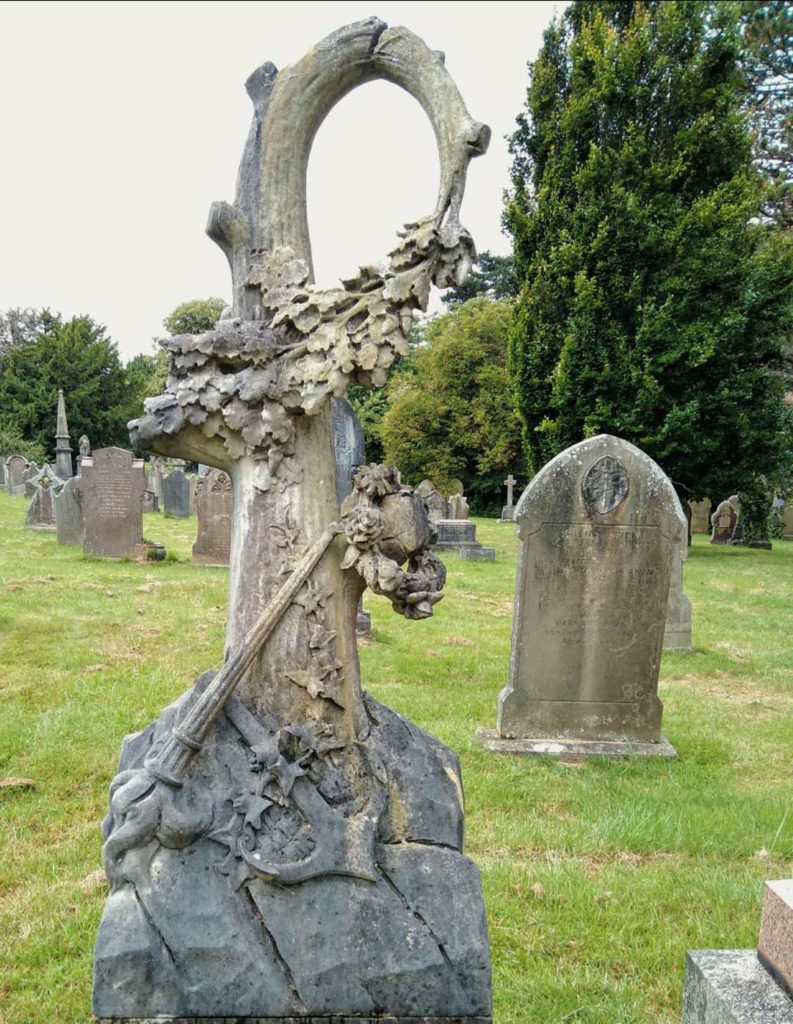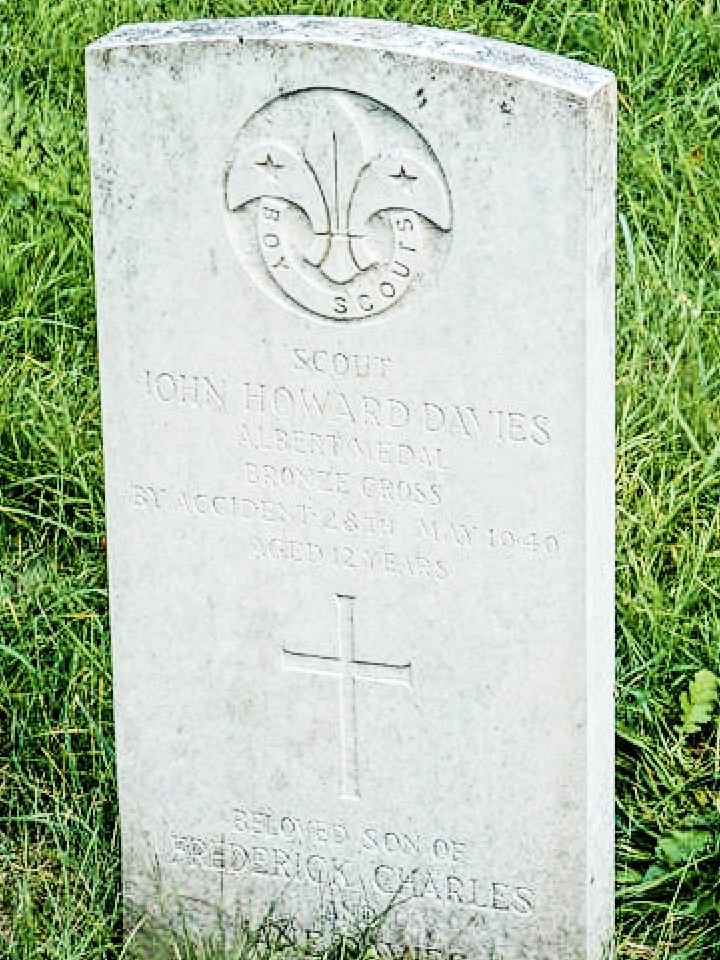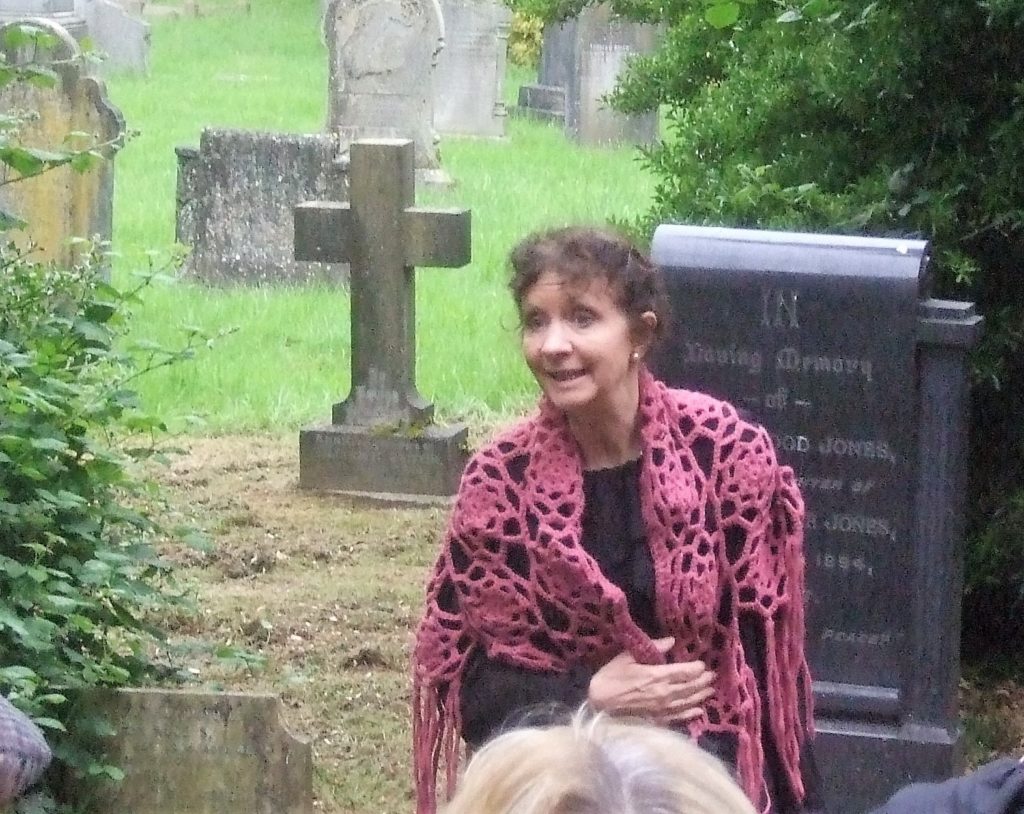For most of us, spending an afternoon in a cemetery might seems unappealingly spooky or morose, but as Jael Li discovers, it can be the fastest and ideal way to soak up the culture, wildlife and history of a new city.
ANOTHER WAY TO EXPLORE YOUR CITY
This is probably the most glorious time of 14-year-old Louisa Maud Evans, a servant of Hancock’s circus. On 21 July 1896, thousands of people rallied at the Cardiff Industrial and Maritime Exhibition in Cathays park to watch her ascend by a hot-air balloon and a 5,000 ft parachute descent later. The wave of applause and cheers was only for her.
But the crowd never saw her again until she was pulled from the mud. There was an agreement that she had drowned because of the heavy parachute. An eye-witness of the tragedy, David James, told the South Wales Echo at the time: “She worked her feet about as if she was trying to avoid the water, but she could not resist the wind and was carried away from land. At length, her feet touched the surface of the water. “
Moved by this young girl’s death, Cardiff residents gave her a decent memorial at Cathays Cemetery. After reading the story of the freak accident online, I intended to pay tribute to her.
As I approach the Cemetery along Fairoak road, refurbished railings are displaying Victorian splendour. After entering the door, two Gothic-style chapels with a bell tower stand in the Cemetery. Follow the heritage trail of the guidebook, I spot Louisa’s white marble grave from grey graves nearby. This material, used for her tomb, was the most prevalent for burials throughout the Victoria period.
The headstones and other monuments of a cemetery provide a valuable snapshot of the history of the communities they serve
Although the girl ‘s white marble memorial has become the home of colourful lichen after more than 100 years, the inscription that residents wrote for her can still be clearly seen: “Brave woman, yet in years a child, dark death closed here thy heavenward flight, God grant thee pure and undefiled, to reach at last the light of light.”
“The headstones and other monuments of a cemetery provide a valuable snapshot of the history of the communities they serve,” said Paul T. Nicholson, Professor of School of History, Archaeology and Religion at Cardiff University. “They give details of the occupations prevalent in the locality and often give some indication of news stories of the time.”
Starting with the “balloon girl”, the historical snapshots of this Cemetery which opened since 1859 are waiting for newcomers to explore.
Cathays Cemetery, as the third-largest Victorian Cemetery in Britain, has the traditional types of symbolistic memorials. Symbolism was a prevalent language of that era to express their expectations and attitude towards death. One of the typical examples is the memorial to John Stuart Rogers, which conveys his strong desire for eternal life.

According to the Heritage Trail’s guidebook, the central tree standing on a rock indicates a secure attachment to religion. The top of the bough has a clear cut in it, representing a life cut off in its prime. The upturned torch is a further symbol of a life extinguished, whereas the anchor epitomises the hope for the life beyond death.
But the Catholic section is totally a different picture from the area close to the central chapel. Numbers of crosses, angels and statues of Jesus add the colour of religious solemnity to this section. It is difficult to ignore one of the most massive and elaborate memorials- Bishop Hedley’s monument.
He was a preacher and an internationally renowned writer, who worked very hard to allow Roman Catholics to be recognised by Oxford and Cambridge. Building schools and churches were also among his goals. The religious icons on his memory show the piety of his religion.
Paul recommended Stoker John Cleal’s story, who was a young sailor and lost his life during the Zeebrugge raid of 1918, having postponed his wedding to participate in the mission. His tombstone is engraved with the image of his ship HMS Iphigenia.
Such stones tell us something of public sympathies at the time as well as recording significant local and national events
“Such stones tell us something of public sympathies at the time as well as recording significant local and national events,” said Paul T. Nicholson.
The young lad Stoker John Cleal represents a group of people who sacrificed their life to wars. The Cemetery’s war graves that were bombed during World War II have around 500 tombs left. These graves are generally simple, small white Portland headstones and decorated with the emblem of the deceased.

Tracing this type of emblem, you can also find heroes who are not soldiers. John Howard Davies, a 12-year-old hero, has been awarded a similar style of the tombstone and an emblem to commemorate the loss of his life to save his drowning friend.
Quuuuuuu…high-pitched and whistle-like sounds from songbirds draw my attention in the Cemetery’s another area- Conservation Areas. In 2002, a conservation policy transformed the five large sections into environmentally friendly areas where the grass is not cut during the summer months. The native flora and fauna are welcome to flourish alongside insects and slow worms.
“There are no chemicals, there is no fertiliser, no weedkillers, so over many years, all this can develop and not be killed. But there are also many animals, hedgehogs, foxes, squirrels, different birds,” says John Farnhill, the member of Friend of Cathays Cemetery, works at Natural Resources Wales.
Ecology has been practised here, and one of the features is encouraging rotting wood. A rotting log pile is lying on the ground. I turn it over and see some fungus grow lush. Varieties of mini creatures and fungi provide a healthy environment for insects, which in turn attracts birds, such as green woodpecker, magpies.
The sun is shining today. Of course, we will not forget this is a place to commemorate loved ones and to talk to a lost family member. In a modern memorial area, toy cars and flowers are still being laid in a little boy’s memorial.
Alongside the irreplaceable commemorative value, Paul said cemeteries could be set out as attractive gardens. “They provide pleasant parkland space for the living as well as a beautiful resting place for the deceased and for the relatives of the deceased to visit.”
Walkers and joggers just like me who have no family connection to the Cemetery but who value its beauty, enjoy the time spending on this great “urban garden”. “I’ve never thought this place has such a rich history,” says a walker with his family.

In last year’s June, some actors brought the history of this unique place to life by presenting the stories of the deceased. The characters included the rich, heroes, tragic and symbolic. People enjoyed the unusual way to listen to historical stories. “Every night’s story is different, and the crowds come and maybe you get 40 or 50 people on a tour. It’s one of the highlights of the year that,” says John Farnhill.
Cathays Cemetery is only part of the picture of Britain’s Cemeteries. Highgate Cemetery, respires from the noise of London and is the historically significant characters’ last residence. Necropolis, is a typical Victorian Cemetery located in Glasgow. Otherwise, perhaps just the Cemetery right on your community’s corner is worthy of having a walk.
This unique and charming site can be regarded as a hugely hidden historic resource, connecting the past and the present- modern residents learn from the memorials. As Madeleine Gray, Reader in History, University of Wales, Newport, wrote at Cathays Cemetery 150th Anniversary book: “To celebrate Cathays Cemetery is to celebrate not death but life- the life of the community of Cardiff and an oasis of wildlife in the city.”
